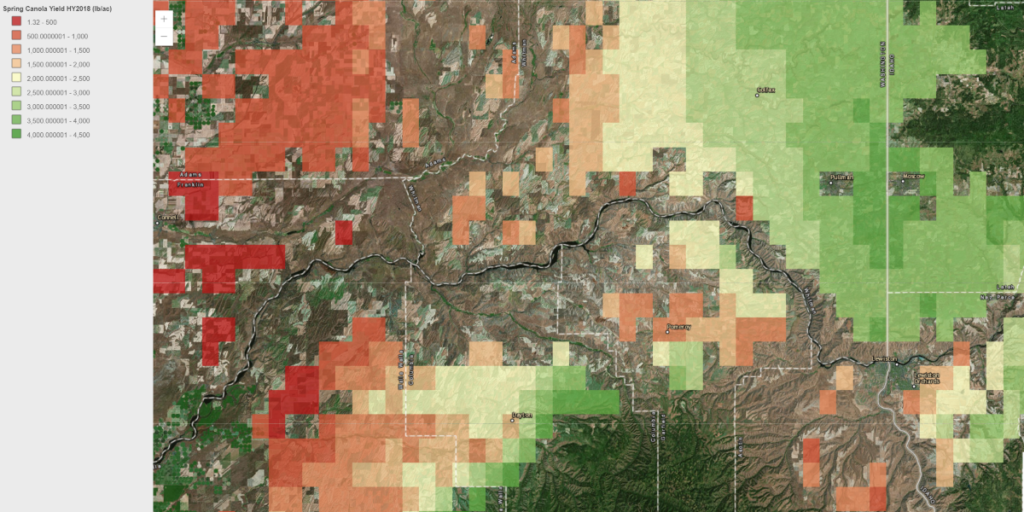
Deciding whether or not to plant a spring crop is a difficult decision. A spring crop could bring in some much needed revenue and help reduce soil erosion, but could also deplete soil moisture. A critical reduction in soil moisture could ultimately impact winter wheat yields. To add more tools to your decision making tool-belt, we’ve generated a few maps to help you make that difficult decision.
Spring Canola
This year is shaping up to be a good one for spring canola. A recent paper by Hammac et al. showed a positive relationship between spring canola yields and total available water. By Feb. 1, we’ve seen greater than normal amounts of rainfall in our region – some areas as much as 5 inches greater than average. The Climate Engine has a neat tool that allows us to see differences in precipitation (see below image).

Indeed, our map of estimated yields for spring canola show similar trends.
The Flex Cropping Tool
The so-called “Flex Cropping” maps were created by growing millions of crops using a computer simulation. We used a computer model that is able to simulate crop growth, farm management practices, soil processes, weather phenomenon, and other important drivers. The model, CropSyst, has been in development for over 20 years and has a rich history in research. It is a powerful and versatile computer model that is fairly processor intensive. This means we had to use a super-computer to crunch all of the data.
Some technical details and caveats
The model was calibrated using WSU variety trial data and assumed a conventional till management practices. A PhD student, Harsimran Kaur, spent many long nights analyzing data and adjusting model details to ensure the model outputs match well with observed yield data. She succeeded too, and has since moved on a greater things. It is important to note, however, that the model did well in predicting past yields but its ability to predict future yields is yet to be determined. The maps generated from the Flex Cropping Tool are rough estimates and should never be taken at face value. They are a decision aid, it is ultimately up to the farmer to judge the quality of the data.
An opportunity for collaboration
We are always striving to help growers improve the quality of their farm and to help with general prosperity. One way in which we are doing this is by providing the Flex Cropping Tool for free. We plan to improve the tool over time, but such improvements will occur more rapidly if farmers provide feedback and other information. One simple way to help us improve the tool is by sending us an email and letting us know if the predicted yields were close to actual. Concrete numbers would be nice, but we’d be happy with a simple comment on whether the actual yields were higher or lower.
